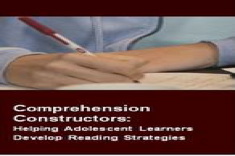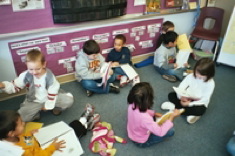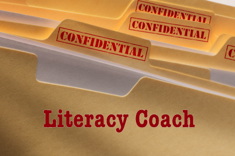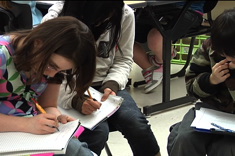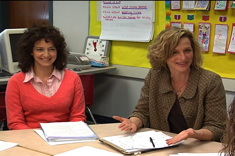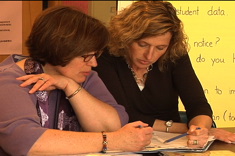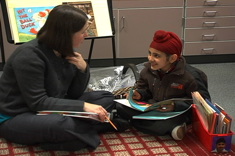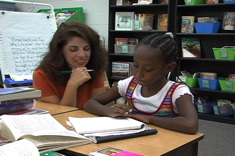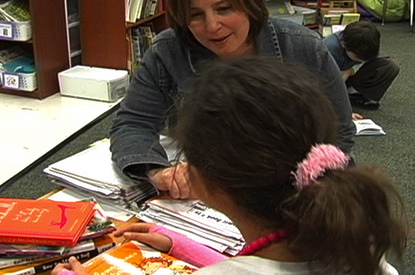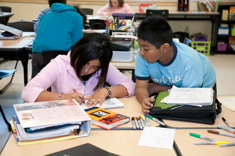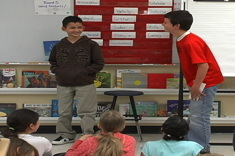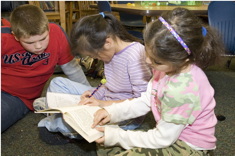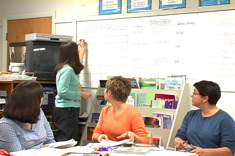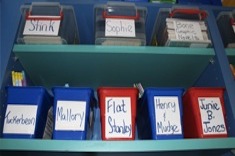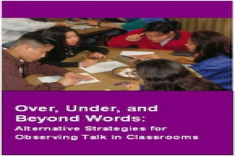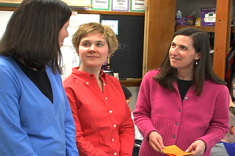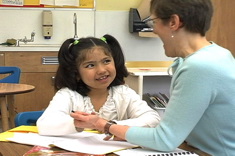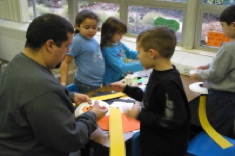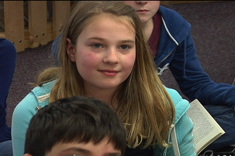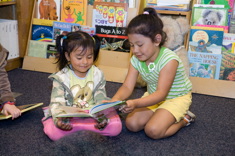Articles
Here is where you’ll find all the latest print features from our contributors. If you’d like to browse specifically by grade level, topic, or contributor, you can use the links in the right sidebar.
Latest Content
Designing Comprehension Constructors: Helping Adolescent Learners Develop Reading Strategies (E-GUIDE)
Comprehension constructors are a terrific tool for helping teens record their understanding.
Mix It Up: Helping Young Writers Learn to Confer with Peers and Teachers
Ruth Shagoury models her own writing as a way to introduce the concept of conferring to young learners.
Literacy Coach Confidential: Some Study Group Participants Aren’t Reading the Book
Have you ever experienced the strange phenomenon of colleagues who show up for book study groups and gab away, even though they haven't read the text? You may be a victim of "bullcrit" – the willingness of some people to critique movies they haven't seen, music they haven't heard, and books they haven't read.
Up Gross and Personal: Dealing with Dicey Topics in Writing Workshops
Even teachers with a high tolerance for the disgusting can get a little squeamish at the topics students choose for writing workshops. What are the boundaries of good taste?
My Son Clark Kent
Lisa Koch shares a parent's perspective of the damage too much emphasis on reading levels in the classroom does to her young son.
Three Little Phrases No Literacy Coach Can Live Without
Brenda Power shares trade secret phrases for communicating with colleagues.
Viewing Guides for DVDs
Here’s where you can find workshop guides for all Choice Literacy DVDs.
Four Essentials in Designing Professional Development for Literacy Leaders
While clever activities for adult professional development are fun, what really helps colleagues become more competent and sensitive to classroom and school needs? Franki Sibberson knows what her colleagues need and gives it to them.
Starting Points: Easy Beginnings for Writing Better Narrative Assessments and Report Card Comments
If you struggle as a writer at report card time, these tips might give you ideas for streamlining your work.
Helping Young Readers Understand the Middle East: A Booklist of the Best Fiction Picture Books
Do your books reflect the images of your learners' families and culture? Ruth Shagoury offers a booklist to explore the Arab and Persian world.
Writing Conference Principles
Brenda Power and Ruth Shagoury describe the principles they live by when conferring with students.
Planning a New Teachers’ Professional Development Program
Jennifer Allen maximizes resources as she plans for a monthly professional development group for new teachers.
Minilessons to Start Conversations with Students About Books
In leadership positions, the first conversations with students about who you are and what you believe can set the tone for the year. Franki Sibberson has helpful advice for talking with readers — big and small.
Family Survey: Report Cards and Evaluations (SURVEY)
Here’s a quick and easy family survey to send home with students.
The “All About Us” Board: Linking Literacy and Community Building All Year Long
Suzy Kaback has terrific tips for an ever-evolving “All About Us” bulletin board to use from the first day of school to the last.
Understanding the “Silent Period” with English Language Learners
Ruth Shagoury and Andie Cunningham explain how to support an English Language Learner who is not speaking with verbal and nonverbal communication strategies.
The Lines are to Write My Words: Phonics in Context
Ruth Shagoury considers the role of phonics in context as she observes a classroom built on a foundation of children's expert knowledge as writers.
On Kidney Tables: Small Changes for Big Effects
When our environment aligns with our values, Karen Szymusiak considers what helps learners take charge of their experience in a successful learning community.
Enlisting Students as Observers
Students are keen observers – put those talents to work in your classroom.
Keeping It Simple: Reflections on the December New Teachers Study Group
What is really important for our time and energy? Jennifer Allen reflects on words of wisdom that keep her centered as a literacy coach.
Chapter Book Read Alouds in the Primary Classroom
Shari Frost considers selection, preparation, and pacing in choosing books that work well as read alouds in the primary classroom.
Family Dichos: Bringing the Language of Home into the Classroom
Ruth Shagoury and Andie Cunningham use dichos (sayings or proverbs) in many languages and cultures to build bridges between school and home.
Over, Under, and Beyond Words: Alternative Strategies for Observing Talk in Classrooms (E-GUIDE)
Words matter. Tried-and-true templates and strategies in this E-Guide focus attention on classroom talk in ways that help grow professional conversations.
What’s Valued? Exploring Different Values in Evaluation (E-GUIDE)
Brenda Power shares a workshop series designed to help educators bring their values into closer alignment for a more cohesive experience for students.
Opinion Exchange (E-GUIDE)
How can quotes lead educators to awareness and acceptance of the diversity of opinions in a group? Discover what this format for discussion has to offer your study group or staff.
The Art of Listening in Writing Conferences with English Language Learners
Ruth Shagoury and Andie Cunningham share tips for mastering the art of listening in conferences with English language learners.
Creative Literacy Events for Families
Brenda Power suggests formats for events that build stronger home-school connections.
Tools to Redesign Your Classroom (TEMPLATES)
Whether it’s time to set up a classroom space from scratch or reorganize space that isn’t meeting needs, The Sisters have the tools you need.
Adjectives to Anecdotes: Writing Better Report Card Comments
Brenda Power helps report card comment writers pack a punch in a few lines with positivity, honesty and some time-saving tips.
Alphabet Books for English Language Learners
Ruth Shagoury lists a variety of books with languages and scripts far beyond the ABCs to connect school and home languages.
Browse Content By
Type
Category
- Assessment Tools
- Big Fresh Archives
- Booklists
- Choice Numeracy
- Classroom Design
- Common Core
- Community Building
- Conferring
- Content Literacy
- Digital Literacy
- English Language Learners
- Equity
- Family Relations
- Free Samples
- Guiding Groups
- Leadership
- Literacy Coaches
- Mentor Texts
- Minilessons
- New Teacher Mentors
- Podcasts
- Poetry
- Quote Collections
- Reading Strategies
- Self Care
- Struggling and Striving Learners
- Talking and Listening
- Teacher Study Groups
- Teaching Reading
- Teaching Writing
- Word Study and Vocabulary
Author
- Melissa Quimby
- Nawal Qarooni
- Gwen Blumberg
- Julie Cox
- The Lead Learners
- Hannah Tills
- Josie Stewart
- Ruth Metcalfe
- Mallory Messenger
- Becca Burk
- Jodie Bailey
- Vivian Chen
- Mary Brower
- Tiffany Abbott Fuller
- Stephanie Affinito
- Ruth Ayres
- Leigh Anne Eck
- Heather Fisher
- Shari Frost
- Julie Johnson
- Suzy Kaback
- Gigi McAllister
- Shirl McPhillips
- Melanie Meehan
- Cathy Mere
- Debbie Miller
- Tara Barnett and Kate Mills
- Tammy Mulligan
- Dana Murphy
- Bitsy Parks
- David Pittman
- Brenda Power
- Heather Rader
- Matt Renwick
- Mandy Robek
- Christy Rush-Levine
- Gretchen Schroeder
- Jen Schwanke
- Brian Sepe
- Katherine Sokolowski
- Stella Villalba
- Jennifer Vincent
Grade Level
Choice Literacy Membership
Articles
Get full access to all Choice Literacy article content
Videos
Get full access to all Choice Literacy video content
Courses
Access Choice Literacy course curriculum and training

